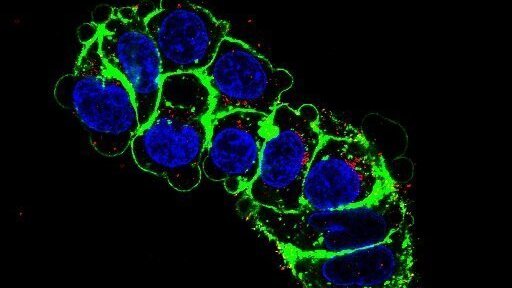Project Kipp (First funding period): Interactions of trace element profiles with Nrf2 signaling in mice
We hypothesize that age-specific trace element (TE) profiles are modulating the activity of the redox-sensitive transcription factor Nrf2. Vice versa, Nrf2 is supposed to regulate the systemic TE status by changing the expression of TE transport and binding proteins, e.g., in the intestine. To address these points, we aim to conduct feeding experiments in young and old mice fed with adequate or suboptimal amounts of six essential TE, including Cu, Fe, I, Mn, Se, and Zn. In addition, we will establish ‘young-adapted’ and ‘old-adapted’ TE diets, which will mimic the TE status of young and old human EPIC participants. A great advantage over human studies is the availability of murine tissue samples, in which effects of different TE diets will be studied in close collaboration with all experimental groups of the Research Unit. We will focus on the liver and the intestine. Using these tissues, we will correlate TE profiles, TE biomarkers, TE-specific binding proteins, and aging markers with Nrf2 pathway activity. We aim to identify new Nrf2-dependent genes relevant for TE homeostasis and intestinal TE absorption both in young and old mice. To identify the Nrf2-modulated part of TE effects, Nrf2 knockout (KO) mice will be studied in parallel. Potential differences between young and old WT and Nrf2-KO mice may provide an explanation for age-specific TE profiles.
Key publications:
Wolfram T, Schwarz M, Reuß M, Lossow K, Ost M, Klaus S, Schwerdtle T, Kipp AP (2020). N-acetylcysteine as modulator of the essential trace elements copper and zinc, Antioxidants, 9: DOI: 10.3390/antiox9111117Externer Link
Schwarz M, Lossow K, Schirl K, Hackler J, Kopp JF, Renko K, Schwerdtle T, Schomburg L, Kipp AP (2020). Copper interferes with selenoprotein synthesis and activity, Redox Biol., 37: DOI: 10.1016/j.redox.2020.101746Externer Link
Finke H, Winkelbeiner N, Lossow K, Hertel B, Wandt VK, Schwarz M, Pohl G, Kopp JF, Ebert F, Kipp AP, Schwerdtle T (2020). Effects of a cumulative, suboptimal supply of multiple trace elements in mice: trace element status, genomic stability, inflammation and epigenetics, Mol. Nutr. Food Res., 1:e2000325. doi: 10.1002/mnfr.202000325Externer Link
Lossow K, Kopp J, Schwarz M, Finke H, Winkelbeiner NL, Renko K, Meci X, Ott C, Alker W, Hackler J, Grune T, Schomburg L, Haase H, Schwerdtle T, Kipp AP (2020). Ageing affects sex- and organ-specific trace element profiles in mice, Aging US, 12: 13762-13790; https://pubmed.ncbi.nlm.nih.gov/32620712/Externer Link
Hauffe R, Stein V, Chudoba C, Flore T, Rath M, Ritter K, Schell M, Wardelmann K, Deubel S, Kopp JF, Schwarz M, Kappert K, Blüher M, Schwerdtle T, Kipp AP, Kleinridders A (2020). GPx3 dysregulation impacts adipose tissue insulin receptor expression and sensitivity, JCI insight, 5 (11):e136283. doi: https://doi.org/10.1172/jci.insight.136283Externer Link
Baudry J, Kopp JF, Boeing H, Kipp AP, Schwerdtle T, Schulze MB (2019). Changes of trace element status during aging: results of the EPIC-Potsdam cohort study, Eur. J. Nutr., doi: 10.1007/s00394-019-02143-wExterner Link
Schwarz M, Lossow K, Kopp JF, Schwerdtle T, Kipp AP (2019). Crosstalk of Nrf2 with the trace elements selenium, iron, zinc, and copper, Nutrients, Sep 5;11(9); https://pubmed.ncbi.nlm.nih.gov/31491970/Externer Link
Bornhorst J, Kipp AP, Haase H, Meyer S, Schwerdtle T (2017). Trace elements risks and benefits; the crux of biomarkers, Trends in Analytical Chemistry, available online 15 November 2017, https://doi.org/10.1016/j.trac.2017.11.007Externer Link
Kipp AP, Deubel S, Arnér ESJ, Johansson K (2017). Time- and cell-resolved dynamics of Nrf2, HIF and NF-κB in spheroids enriched for cancer stem cells, Redox Biol. 10:403-409. https://doi.org/10.1016/j.redox.2017.03.013Externer Link
Project Kipp (Second funding period): Interactions of trace elements in modulating the immune response during acute and chronic inflammation in mice
In TraceAge I, we could show that supplying mice with low amounts of the trace elements (TE) Cu, Fe, I, Mn, Se, and Zn (TE-) results in growth retardation and increased spleen weight in comparison to mice with adequate TE intake. In line with splenomegaly, serum levels of the inflammatory mediators TNF-α and CRP were increased. Based on our results, it appears that the immune system is very sensitive towards changes in TE intake. During aging, a low-grade systemic inflammation, called inflammaging, has been described. Thus, it is tempting to speculate that older organisms might have another need for TE to cope with inflammation than younger individuals. To address this, we aim to combine our established TE- regime with models of acute and chronic inflammation in young and old mice by applying the DSS model to induce colitis and LPS injection to study systemic inflammation. Besides TE profiles, inflammatory parameters as well as intestinal integrity will be analyzed. Vice versa, it is well-established that TE homeostasis is regulated in a different manner under conditions of inflammation as part of the so-called nutritional immunity. Thus, we aim to understand, how an acute and chronic inflammation affect the TE status and their biomarkers. Both questions will be addressed in mice and complemented with mechanistic studies conducted in cell culture. This project is supposed to provide the basis for considering all six TE in the future to better characterize and eventually improve the health status of humans suffering from acute and chronic inflammation.

